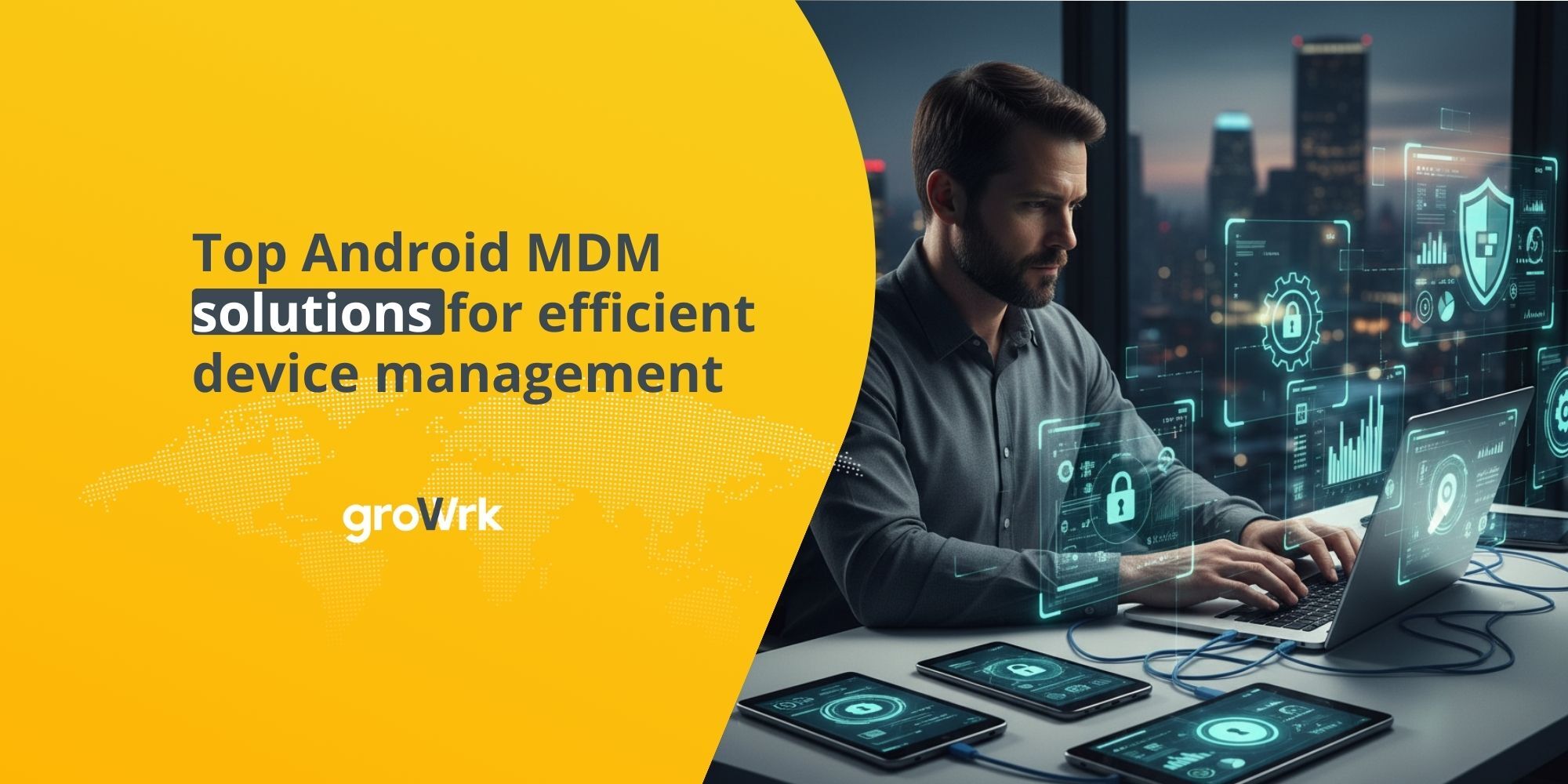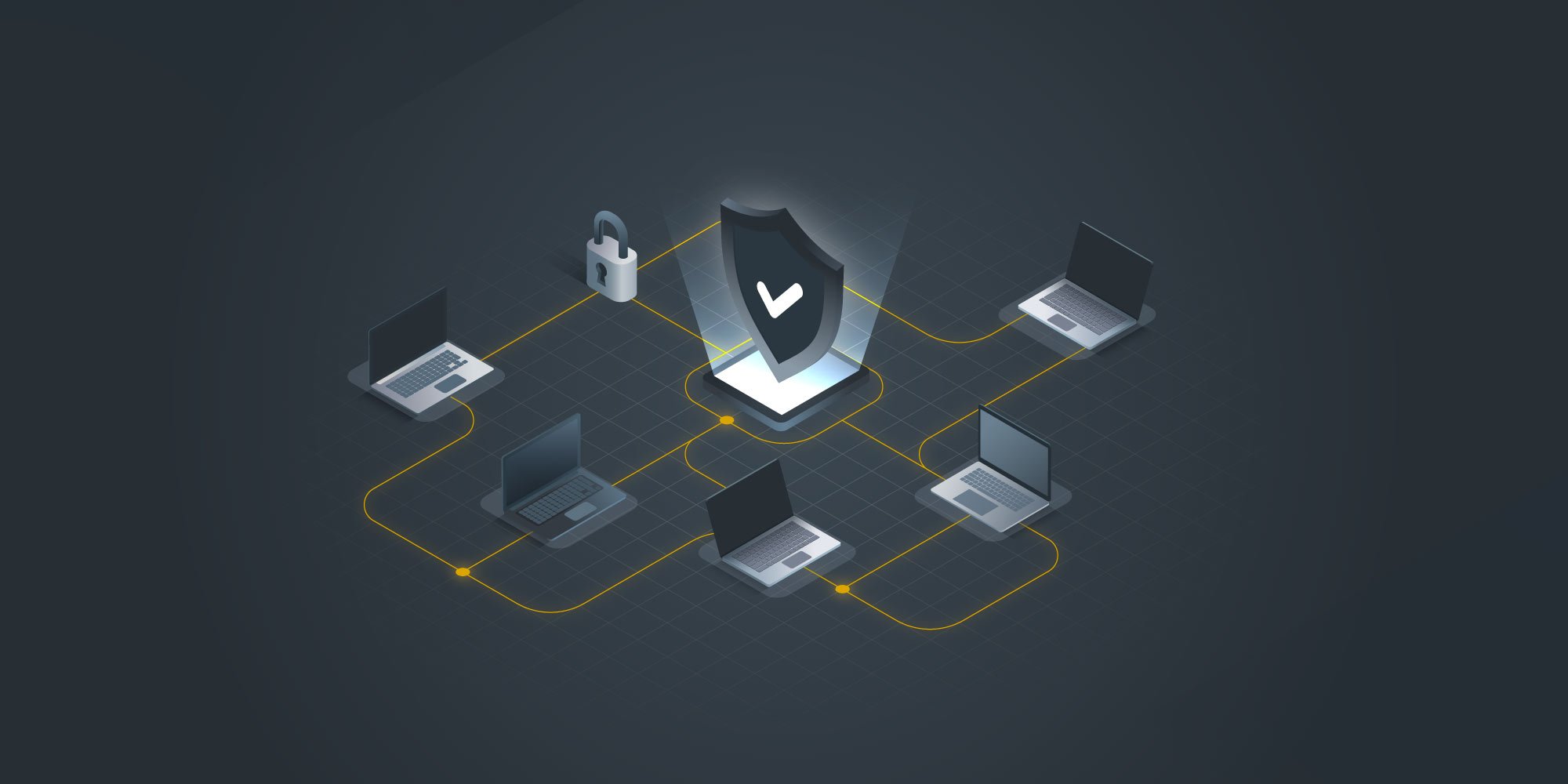IT Equipment Disposal: A Secure & Compliant Framework
 GroWrk Team
GroWrk Team
Do you need to get rid of old computer equipment—desktops, laptops, printers, or network devices—but aren't sure how to do it securely and responsibly? You're not alone.
According to GroWrk's State of IT Lifecycle Management 2025 report, sustainability and secure device disposal are now core priorities for IT professionals. 76% cite sustainability as a growing corporate focus, and over half rely on third-party end-of-life services to handle retired assets responsibly.
This guide covers essential practices for disposing of IT equipment step-by-step, protecting sensitive data, complying with regulations, and minimizing environmental impact.
Key takeaways
-
Proper IT equipment disposal is key to data security, regulatory compliance, and environmental protection and affects an organization’s reputation.
-
Secure data erasure methods, including overwriting and physical destruction, are necessary to prevent unauthorized access to sensitive information before disposal.
-
Choose certified ITAD providers and use asset disposition services to stay accountable, compliant, and sustainable—and to support your CSR efforts.
What is IT equipment disposal?

IT equipment disposal is the process of responsibly disposing of outdated equipment. Proper IT asset disposition services are essential for managing non-operational hardware, ensuring data security, regulatory compliance, and minimizing environmental impact. GroWrk's 2025 report highlights that only 22.3% of global e-waste was recycled in 2022, with IT devices contributing 1% of global emissions. Legal and ethical disposal practices are crucial, and lacking ITAD policies can lead to data breaches, environmental harm, and regulatory issues.
How to securely erase data before disposal
Before any IT equipment can be disposed of, data must be securely erased to prevent unauthorized access to sensitive information on a memory or storage device. This includes overwriting every disk sector with zero-filled blocks to comply with Department of Defense standards. Imagine your company’s confidential data on a device that ends up in the wrong hands; the consequences could be disastrous.
-
Overwriting data: Writing random patterns over existing information, making it unrecoverable.
-
Disk sanitizing software: Erases sensitive information from hard drives and other storage media.
-
Degaussing: Disrupts the magnetic field of hard drives, making data unrecoverable and the device unusable.
-
Physical destruction methods: Shredding, incineration, and crushing ensure data is unrecoverable but with some environmental impact.
With cybersecurity growing more complex, 74% of IT teams now prioritize encryption, and 63% rely on employee training to protect sensitive data across devices (GroWrk, 2025).
Using certified methods and getting a Certificate of Data Destruction proves that devices have been wiped and disposed of. Adhering to industry standards like NIST 800-88 gives you peace of mind. This step keeps data secure and protects your organization from breaches.
Steps in IT equipment disposal
The IT equipment disposal process is a structured approach to managing obsolete or unwanted technology assets. It involves a series of steps to ensure data security, regulatory compliance, and environmental responsibility, ultimately protecting your organization and promoting sustainable practices.
Portable storage devices like USB drives are also part of the technology equipment for disposal.
.png?width=600&height=300&name=it%20equipment%20disposal%20(1).png)
Assessing your IT equipment condition
The first step in IT asset disposition is to assess your technology assets. This will determine if the equipment can be reused, resold or recycled. Knowing the current state of your IT assets is key to deciding the best disposal method and maximize value recovery.
Secure data removal
Removing data securely from storage devices is a critical step in the disposal process. Techniques like overwriting data, disk sanitizing software, and physical destruction methods are used to securely erase data prior to decommissioning these devices. This step is essential to protect sensitive information and prevent unauthorized access.
Environmentally responsible disposal
Disposing IT equipment in an environmentally responsible manner is essential to minimizing ecological impact. This involves using certified recycling facilities and following industry best practices to handle toxic materials safely. Recycling and refurbishing extend the useful life of technology assets and support sustainability efforts.
Compliance with regulations
Following legal regulations and industry standards is key to the IT equipment disposal process. This includes guidelines for data destruction and environmental compliance to avoid fines and legal action. Certified ITAD providers ensure that your disposal process meets all compliance requirements.
Documentation and record-keeping
Keep detailed documentation and records to verify compliance and accountability in the disposal process. Reports and certificates of data destruction
Electronic equipment recycling
Electronic equipment recycling is a vital part of responsible waste management, ensuring electronic devices are disposed of in an environmentally responsible manner. As organizations upgrade their technology, good recycling practices become key. But why is this so important?
How to choose the right IT Asset Disposition services?
.png?width=600&height=300&name=it%20equipment%20disposal%20(2).png)
Choosing the proper IT Asset Disposal company is crucial for the secure and responsible management of your organization’s IT equipment. Asset disposition services are part of IT asset lifecycle management, which ensures the safe and environmentally responsible disposal of hardware assets. Here are the key factors to consider when selecting an ITAD provider:
-
Certified providers: Go for vendors with certifications like R2 or e-Stewards to ensure safety and environmental standards adherence.
-
Industry experience: Check the provider’s experience and track record in IT asset disposal to ensure reliability and expertise.
-
Data security: Look for ITAD services that offer full accountability during shipping and processing to maintain data security and prevent breaches.
-
Transparent documentation: For compliance and peace of mind, choose a provider that offers clear and thorough documentation throughout the disposal process.
-
Scalable operations: Ensure the provider can scale their services to meet your growing and changing disposal needs.
-
Sustainability commitment: Select a partner that supports environmentally responsible practices like ethical recycling and value recovery from obsolete equipment.
Top IT asset disposal service for remote work teams
Certified ITAD service providers ensure compliance and secure handling of disposed equipment. Evaluate the vendor’s ability to scale operations as your disposal needs evolve. Here are the top 5 IT asset disposal service providers for 2025:
1) GroWrk
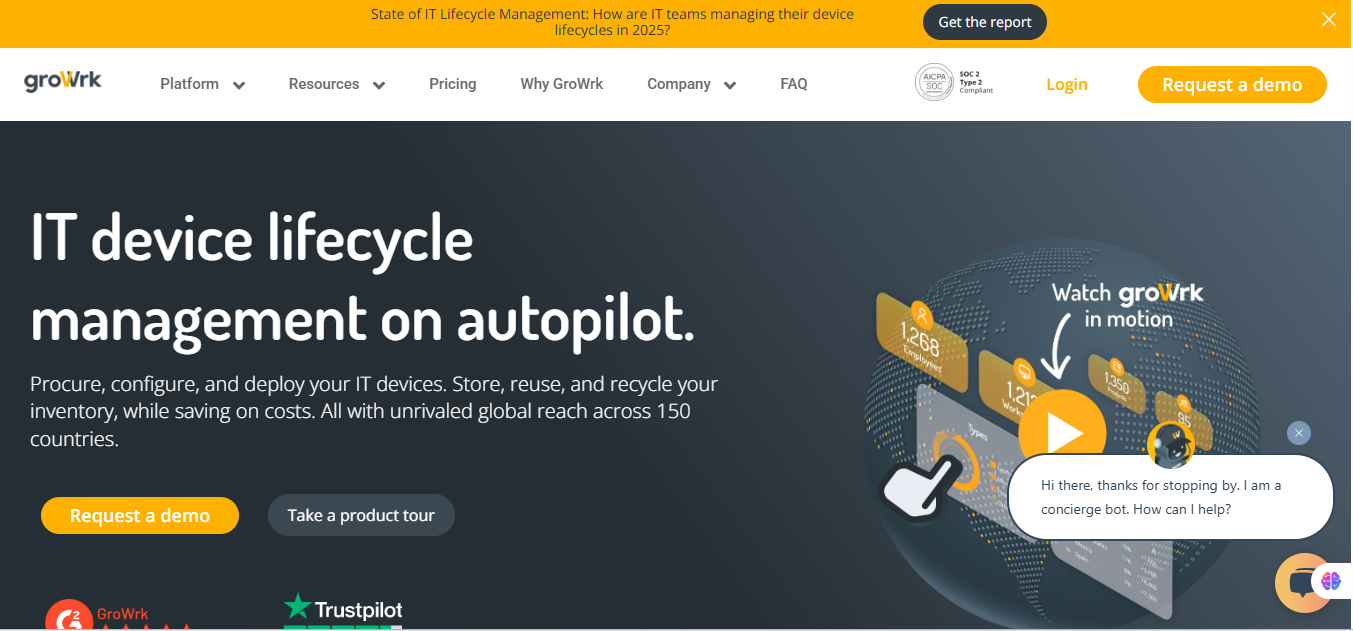
GroWrk is a leading IT asset disposal service provider with comprehensive solutions for remote work teams. With operations in over 150 countries, GroWrk offers a seamless platform for managing IT equipment throughout its lifecycle, ensuring secure and environmentally responsible disposal.
Pros:
-
Global reach: Operates in over 150 countries, providing consistent service across multiple locations.
-
Comprehensive services: Offers a full suite of IT Asset Management from procurement to disposal.
-
Advanced security: Features like remote device management and disk wiping for data security.
-
Sustainability focus: Offers options for ethical disposal, recycling or resale of IT devices.
-
Transparent pricing: Provides clear pricing models and detailed reporting to help with budgeting.
Cons:
-
Complexity for small teams: Smaller teams may find the features overwhelming.
-
Initial setup time: Setup and integration can take time.
2) Sims Recycling Solutions
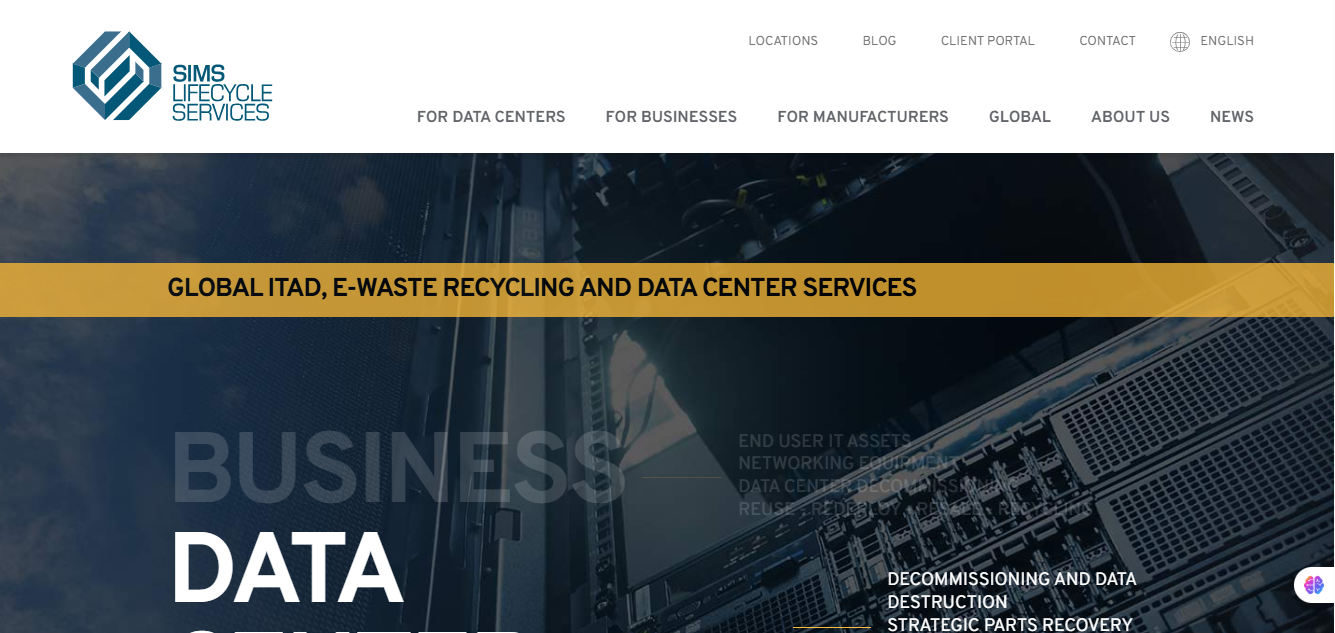
Sims Recycling Solutions is an IT asset disposal service that’s all about simplicity and cost-effectiveness, perfect for smaller remote work teams looking for straightforward solutions.
Pros:
-
Cost-effective: Competitive pricing for organizations with budget constraints.
-
User-friendly interface: Simplified processes to manage IT asset disposal.
-
Quick setup: Fast onboarding and integration with minimal technical requirements.
Cons:
-
Limited global reach: Primarily serves local markets and may not be suitable for global teams.
-
Basic features: Lacks some of the advanced security and management features of larger providers.
3) EcoTech Disposal
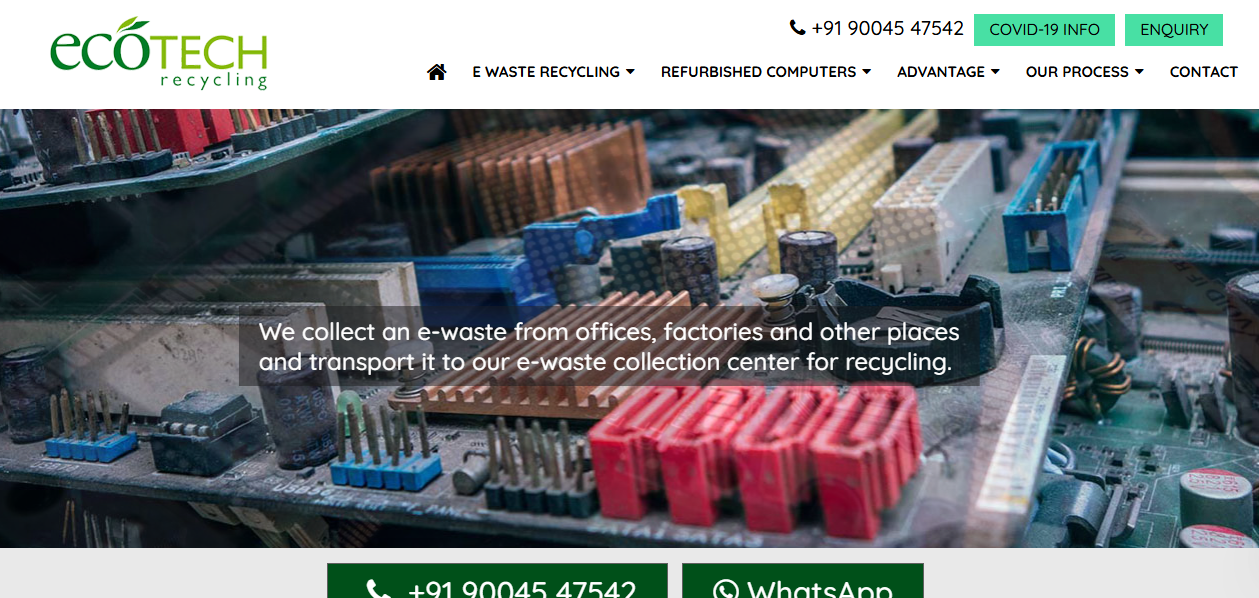
EcoTech Disposal is an eco-friendly IT asset disposal service focusing on environmental responsibility and sustainability. This is great for organizations looking to dispose of IT equipment for distributed teams.
Pros:
-
Environmental commitment: Strong focus on sustainable disposal practices and recycling.
-
Industry certifications: Holds certifications to ensure compliance with global environmental standards.
-
Partnerships with global Green initiatives: Works with international environmental organizations to enhance sustainability.
Cons:
-
Higher costs: Premium pricing due to sustainability focus.
-
Limited service options: May not offer all the IT asset management services of competitors.
4) Iron Mountain
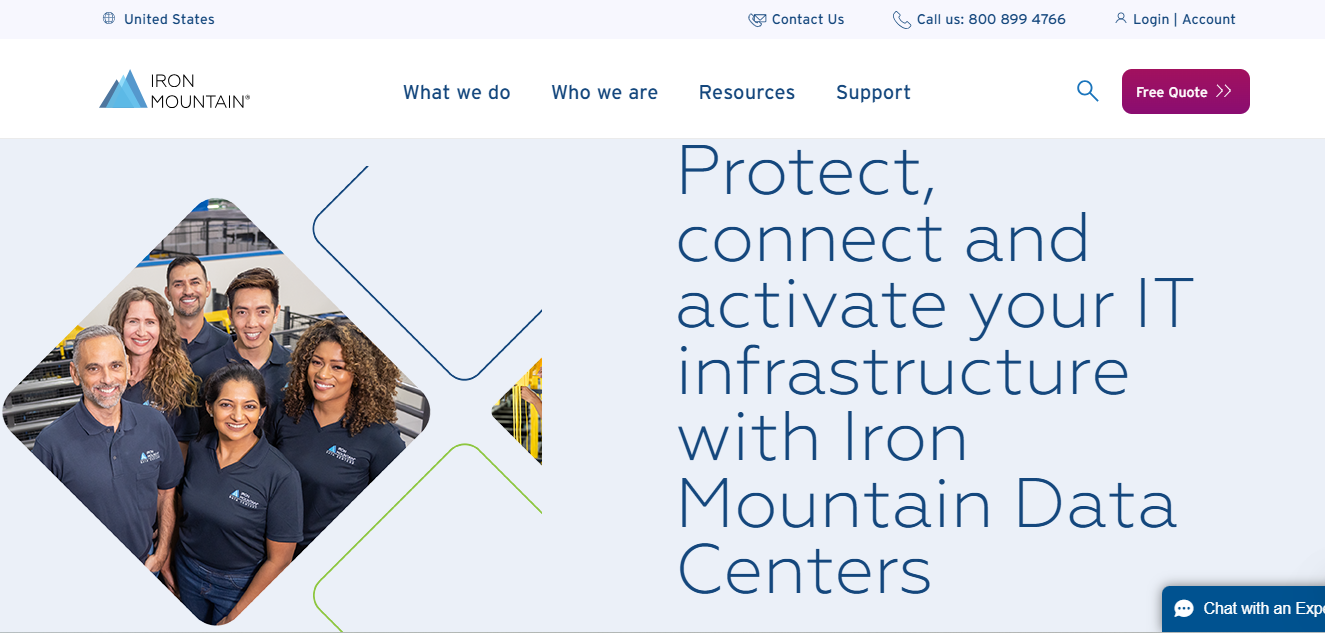
Iron Mountain is a well-known IT asset disposal service with robust data security and reliable service delivery for organizations with high data protection needs.
Pros:
-
Strong data security: Implements strict data protection protocols to prevent breaches.
-
Reliable service: Proven track record of consistent and reliable service delivery.
-
Flexible solutions: Customisable services to meet organizational requirements.
Cons:
-
Premium pricing: Higher costs for advanced security features.
-
Complex service packages: Requires detailed understanding to fully use all available options.
5) Sipi Asset Recovery
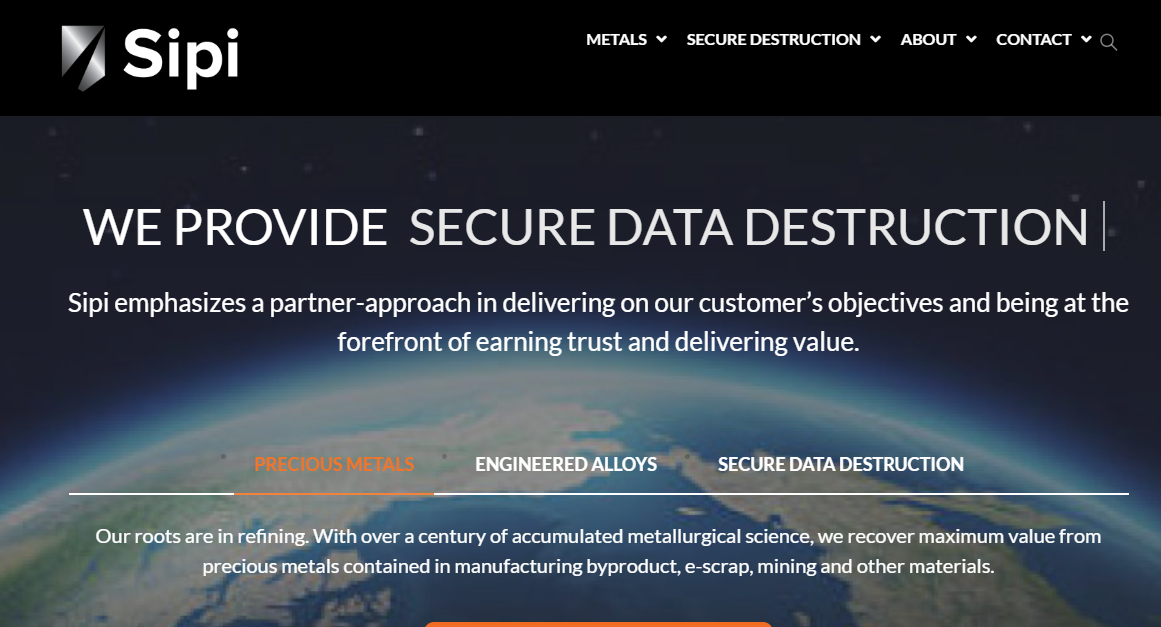
Sipi Asset Recovery offers IT asset disposal services with a focus on flexibility and scalability so is great for rapidly growing remote work teams.
Pros:
-
Scalable services: Can adapt to changing needs of growing organizations.
-
Flexible contracts: Customisable contracts to suit business requirements.
-
Strong customer support: Excellent customer service and support for smooth operations.
Cons:
-
Limited advanced features: May not have all the advanced technology and security features of larger providers.
-
Regional limitations: Services may be limited to specific regions, affecting global operation.
Environmentally responsible disposal practices
.png?width=600&height=300&name=it%20equipment%20disposal%20(3).png)
Proper recycling practices in ITAD are key to minimizing environmental impact and supporting sustainability efforts. As organizations discard old equipment, it’s essential to consider the ecological effects. Whether refurbishing, recycling, or discarding IT equipment, these processes must comply with environmental regulations to prevent harm to the ecosystem.
-
Specialized collection: Use electronic recycling bins or take-back booths to collect used IT equipment in an environmentally responsible way.
-
Toxic substance management: Recycling prevents soil and water contamination by toxic substances like lead and mercury found in e-waste.
-
Sustainability focus: GroWrk offers options for ethical disposal, recycling, or resale of electronic devices at the end of their lives.
-
Refurbishing and reusing: Refurbishing extends the life of IT equipment, reduces waste, and conserves energy and resources.
-
Circular economy: Recycling IT hardware promotes a circular economy, reducing the environmental footprint of organizations.
By following these practices, organizations can reduce their environmental impact and comply with IT equipment guidelines.
Why GroWrk is the trusted partner for IT equipment disposal?

GroWrk helps global organizations manage end-of-life IT assets with ease, transparency, and sustainability. You can recycle, donate, destroy, or resell straight from the platform. Our dashboard let's you check on device health and gives you notifications when devices are approaching the end of useful life. Designed for distributed teams, GroWrk’s platform goes beyond basic IT asset disposal—offering a complete solution that covers every stage of the IT lifecycle.
Here’s why GroWrk stands out:
- Global ITAD coverage
Operates in 150+ countries with standardized processes for secure retrieval, recycling, or resale of devices—ideal for remote and hybrid teams. - End-to-end lifecycle management
4 disposal options to choose from: - Secure and compliant disposal
Includes remote disk wiping, MDM enrollment, and identity management to protect sensitive data. Certified methods meet global compliance standards like NIST 800-88. - AI-powered support
Offers real-time troubleshooting and operational support to resolve IT issues quickly and minimize downtime during offboarding. - Sustainability built-in
Enables eco-friendly recycling and device resale. Automatically generates disposal certificates to support your CSR and ESG reporting. - Transparent pricing & reporting
No hidden fees. GroWrk provides detailed reporting on retrievals, disposal activity, and costs to support audit readiness and strategic planning.
For companies managing global workforces and scaling IT operations, GroWrk makes secure, sustainable asset disposal simple. Schedule a demo today to see how we help global teams stay secure, compliant, and sustainable.
FAQs
Why is IT equipment disposal important?
IT equipment disposal is essential for data security, environmental protection, and regulatory compliance. Proper disposal prevents data breaches and environmental risks.
What are some secure data erasure methods?
Effective, secure data erasure methods include overwriting data, using disk sanitizing software, degaussing, and physically destroying the media through shredding or incineration. These methods prevent sensitive information from being recovered.
What services do IT Asset Disposition providers offer?
IT Asset Disposition providers offer complete services, logistics, inventory management, secure transportation, and data destruction, and facilitate value recovery from old equipment through resale or reuse.
Why is GroWrk the trusted partner for IT equipment disposal?
GroWrk is the trusted partner for IT equipment disposal because of its full services, advanced security, and sustainability across 150+ countries. Transparent pricing and detailed reporting on equipment usage and lifecycle management make it even more reliable.


